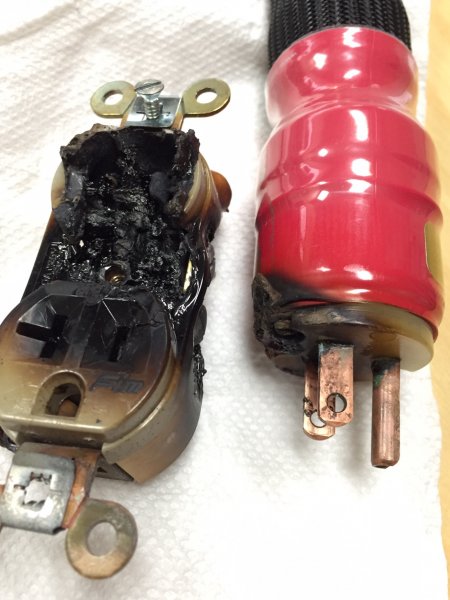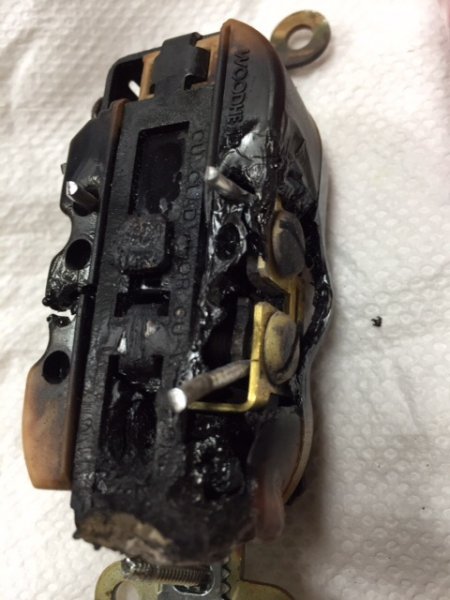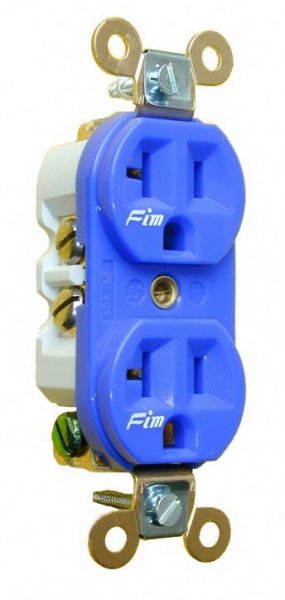
This is a very good example of why we always recommend that you replace the "cheap commodity" outlets in your wall. A customer sent us this burned up outlet and the power cord that was toasted by the outlet. Fortunately there weren't any curtains or flammable stuff near the outlet or else this fellow's house probably would have burned down.
This particular outlet was an "audiophile grade" outlet. Unfortunately the customer installed aluminum solid core in-wall wiring. The electrical inspector said that the aluminum metal and the contact's metal were "incompatible" and caused contacts to overheat. We were sent the cable and outlet to provide a letter to the insurance agency regarding the possibility of repairing the power cord.
I personally know of two other people were the house was destroyed by fire from an overheated outlet. If you use space heaters or other high current equipment (audio equipment and home theater) do yourself a favor and replace the 59 cent outlet with a good commercial grade outlet. Then don't go too audiophile nuts with the in-wall wiring.




